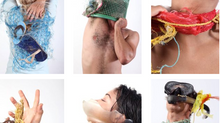Professional Practice- Swot Analysis
- Admin
- Nov 1, 2017
- 3 min read
Strengths
I like being a leader
I am able to communicate easily
Willing to work
Kind and friendly
Has a good sense of humour
Photographed a wedding and other events
I have a quite a good follower base and a few contacts
I have a plan for the future
I strive for success
Committed
Hard working
Passionate
Happy to model
Weaknesses
Need to get my work out there more
Be more productive in finding photography jobs
Work harder on my wix blogs
Feel more confident about my work and knowledge
Opportunities in my Career Field
Shooting for large magazines such as vogue, billboard, rolling stone etc
Becoming successful
Travelling the world
Meeting many different types of people
Work experience
Build up contacts
Feedback from others
Get my name known
Threats in my Career Field
Competition
Technical advances
Lack of work
Safety
Cost
Being able to stand out from the crowd
Roles and Responsibilities as a photographer
working with clients to discuss the images they require and how they want to use them
seeking out appropriate photographic subjects and opportunities
carrying out research and preparation for a shoot
working in different locations and circumstances to get the right image
using an extensive range of technical equipment, including cameras, lenses, lighting and specialist software
arranging still life objects, products, scenes, props and backgrounds
liaising with other professionals, including graphic designers, writers, gallery managers, picture researchers, commissioning editors and art directors
managing the processing and use of images, discussing technical problems, checking for quality and dealing with clients' concerns
compiling finished products for sale, such as albums and framed prints
understanding traditional film and digital photography and keeping up to date with industry trends, developments and new techniques
developing expertise with software to digitally enhance images by, for example, changing emphasis, cropping pictures, correcting minor faults or moving objects around
managing the business aspects of the work, including administration, scheduling work, invoicing and basic accounting
developing a good portfolio, building a network of contacts and achieving a reputation for quality and reliability in order to secure future assignments
self-marketing by, for example, producing business cards, postcards and promotional materials and creating and maintaining a website.
Estimated Salary
In full-time employment, starting salaries can be between £12,000 and £22,000.
Many entrants to the profession start as assistants, resulting in some extremely low starting salaries - sometimes around £10,000 a year.
Salaries can increase to anywhere from £25,000 to £65,000. The top end of the scale is typically for those who have a strong reputation and are highly sought-after.
Freelance and self-employed photographers often supplement their income with other related activities, such as giving photography lessons.
All salary's are an estimate!
Working Hours
Hours can be long and unpredictable and may be led by demand. For example, wedding photographers will be at their busiest in the peak spring/summer wedding season and sports photographers will expect to work weekends and evenings to cover fixtures and events.
Freelance photographers may have periods of working at maximum capacity followed by times when there is little or no work.
Skills
excellent technical skills, using digital and non-digital cameras and industry-standard software such as Photoshop
creativity and an eye for a picture
personality, perseverance, patience and dedication
the ability to work under pressure, juggle workload and meet deadlines
the ability to work both independently and in teams, building rapport with clients, colleagues and other businesses.
Employers
The police employ forensic photographers to take 'scene of crime' and forensic photographs. This work may incorporate videography and is not for the squeamish. Further details are available from individual police forces. The Ministry of Defence (MoD) also employs qualified photographers.
Some museums have permanent photographers who catalogue exhibits and contribute to educational materials.
High street photographers and wedding/social photographers may take on trainees and assistants.
Commercial studios, which are a significant employer in the industry, are based mainly in London, but there are a few in other large cities.
Many large organisations, such as businesses, universities, local authorities and charities, employ staff photographers, who may also be involved in audiovisual or marketing work. There is a low level of staff turnover in these types of posts, so vacancies appear infrequently.
Cruise liners, holiday companies and theme parks employ photographers to provide a social photography service. Work is usually offered on a short-term contract and recruitment is generally handled through an agency.
Work Experience
It is essential that you have significant work experience when applying for photography work.
You will need a professional and impressive portfolio, which could be online, a traditional book or on a CD/Memory stick.
Whichever format you choose, your portfolio must be:
relevant to the chosen area
well presented
constantly updated
Volunteering, work shadowing, work experience and project work with photographers or relevant employers are also great ways of gaining experience and skills, as well as making contacts. You should take any opportunity to have your work published.






























Comments